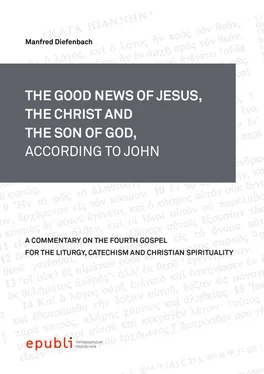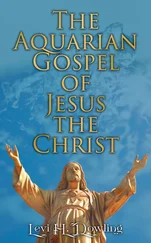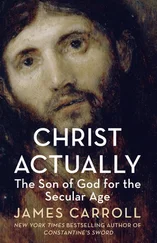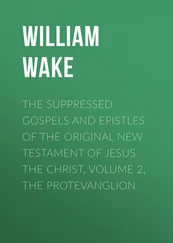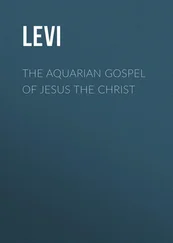v. 28:Therefore he declares with the help of a correction 273(“not … but”) his role/part regarding God’s incarnation and salvation in the world as a “forerunner”. For that he repeated/quoted his self-saying in John 1:20b, 30d:
“ I am not the Christ ”,
“ but … ( I am ) sent ( ) before Him ”.
v. 29:He explains his saying with the help of a parable of the relationship between a “ friend ” (= John the Baptist) and a “ bridegroom ” 274(= Jesus – cf. v. 29b, c – note the parables with an eschatological viewpoint in Mark 2:19–20; Matthew 9:15; 25:1, 5–6, 10; Luke 5:34–35; Revelation 18:23): “The image is that of the bridegroom’s best friend protectively keeping watch over the house of the bride (Israel), waiting to hear the approach of the bridegroom (Jesus) as he comes to take her to his home” 275(cf. vv. 26a, 30b). The Fourth Evangelist emphasizes the eschatological viewpoint of John the Baptist’s mission as a “ joyful ” 276“ fulfilling ” 277(cf. John 15:11; 16:21, 24; 17:13; 1 John 1:4; 2 John 12).
v. 30:John the Baptist, the “preparer” respectively the “forerunner” (cf. v. 28d and John 1:7–8, 23; Mark 1:2; Matthew 3:3; Luke 3:4) of Jesus, the “ Son of Man ” (v. 14b 2) and the “ Christ ” (v. 28c) as well as the “ Son of God ” (v. 18c – cf. vv. 35–36), concludes his reflection about himself as a contrast in the sense of a climax respectively synthesis:
“ He ” (= Jesus) “ must ” (cf. vv. 7c, 14b) “ increase ” 278(cf. Luke 1:80; 2:40), but
“ I ” (= John the Baptist) “/ must / decrease 279”. In other words: With John the Baptist ends an era, however with Jesus begins a “new ‘divine’ era” – note the divine “ must ” (in Greek “ de ῖ ”) in verse 30a.
The tradition of the Church/es – since the Church Fathers Ambrose (about 340–4 thApril 397 A.D.) and Augustine (13 thNovember 354–28 thAugust 430 A.D.) – fixed the nativity of Jesus Christ on 24 th/25 thDecember in contrast to the feast of the nativity of John the Baptist on 24 thJune in consideration of the solstice because after Christmas the days become longer again and the night/darkness becomes shorter and after the so-called Day of John the days become shorter and the nights become longer.
+ John the Baptist’s Theological Reflection on Jesus (vv. 31–36)
John the Baptist continues his answering with a theological reflection on Jesus (cf. vv. 31–36).
v. 31:He introduces his saying with a contrast of “earthly” human beings – everyone “ from the earth ” who “ is from the earth and (speaks) / as one / from the earth ( )” (cf. v. 12a and John 8:23; 1 Corinthians 15:47; 1 John 4:5) – and the “heavenly” one who “( ) comes ( from above )” (in Greek “ á nothen ” in v. 31a[, d] – cf. v. 3c and John 8:23) respectively “ from Heaven ” (in Greek “ ek to ũ ourano ũ ” in v. 31d – cf. v. 13b) without the mention of the name Jesus in verses 31–36.
v. 32:Then John the Baptist briefly describes the two possibilities of a relationship between the “divine witness 280” who “ has seen and heard ” (cf. v. 11d) God (cf. vv. 34–35) and the human beings as a contrast: First, the troubled relationship between Jesus and everyone who “ does not accept /receive 281(His) testimony ( )” (cf. v. 11f) to God.
v. 33:However, the faithful people “accept/receive (His) testimony” – note the parallel with verse 32c – because “ God ( is ) truthfully 282( )” (cf. 8:14, 26; 19:35; 21:24) – note the present tense – for them.
vv. 34–35:John the Baptist continues his saying with a description of the relationship of the divine “ Son ” (vv. 35a, 36a) and God, “ the Father ” (v. 35a) in “ love ” (v. 35a – cf. 16a–b) in verses 34–35 (cf., for example, 5:20; 10:17; 15:9; 17:26). The “inspirited” (in Greek “ pne ũ ma ” in v. 34c and 6:63) and from God authorized (v. 35b: “ to give ” (in Greek “ d í dom ɩ ” in vv. 16b, 27c, 34c, 35b) “ everything in [ His ] hand [ ]”) “transmitter”/“divine ambassador” “ has sent ” (v. 34a – cf. v. 17a and 7:16; 12:49; 14:24) from God to “speak” (v. 34b – cf. v. 31c) “ the Word of God ” 283(v. 34b – note the contrast with verse 31b–c) to the people(s) without “ limit / measure ” 284.
v. 36:As in verse 15, John concludes His saying with a prophetical promise in a positive way:
Everyone who “ believes in the Son has ( eternal ) life ( )” (in Greek “ zo é [ n ]” in v. 36a, b and John 5:24; 6:40, 47; 10:10, 28; 11:25–26; 20:31; 1 John 5:12).
However, the prophecy warns the “non-believers” (cf. vv. 18b–20, 36b) in Jesus, God’s witness on earth, with the help of a correction 285(“not … but”):
Everyone who “ rejects 286 the Son shall not see life” (cf. 1 John 5:12),
“but the wrath” (cf. Matthew 3:7/Luke 3:7) “of God 287stays/remains on him” (in Greek “méno ep’ autón” in John 1:32c, 33d; 19:31).
As the encounter of the Pharisee Nicodemus with Jesus, a double setting (cf. 3:22–24, 25–26) in verses 1–3, 4–6 introduces a new (cf. 3:2–21) dialogue 288between Jesus of Nazareth, the “ Jew ” (v. 9b) from Galilee, and a Samarian woman from Sychar who came to the well to draw water in a water-pot for her home (cf. vv. 5–26). His disciples (cf. vv. 27, 31–38) were shopping in her “ town ”. The topics of their talk are “ the living water ” like a theological/spiritual “meditation” 289in verses 7–15, His knowledge of her partnership with “ five men ” in verses 16–19 and the reflection of the true personal worship 290in contrast to the local prayer-houses on Mount Zion in Jerusalem and on Mount Gerizim 291in verses 20–26 292including the “very positive statement” 293in verse 22 without traditional, cultural and sexual as well as religious barriers. The Evangelist “adopts the double-stage technique” 294after the shopping of bread by His disciples (cf. vv. 27–28) and the going of the woman to her settlement. So Jesus, the “ rabbi ” (v. 31b), discussed with His disciples about “the nourishing food” in verses 31–34 and “the harvest” in verses 35–38 as a short “monologue” 295by Jesus. The Samaritan woman (cf. vv. 28–30) informed the citizens of Sychar about Jesus as “ Christ ” (vv. 25c, 29e – note also the titles in her mouth: the “ Jew ” [v. 9b], the “ Lord ” [vv. 11b, 15b, 19b], a “ prophet ” [v. 19c]) like Martha (cf. 11:27) and Mary of Magdalene (cf. 20:18). At the end, the Samaritans from Sychar believed in Him (cf. vv. 39–42) as the “ Saviour of the world ” (v. 42d).
As in verses 1–6, we have in verses 43–46c a double setting (cf. vv. 43–45, 46a–c) again. Verses 43–45 have the form of a “journey note” (“itinerary”) as in verses 1–3. The second setting in verse 46a–c introduces a distant healing of the royal official’s son from Capernaum in Cana (cf. vv. 46d–53). The Fourth Evangelist concludes the part “from Cana to Cana” 296(cf. 2:1–4:54) with verse 54 as a counting of Jesus’ “signs” – note His “ first sign ” at the Galilean Cana (cf. 2:11).
Читать дальше
